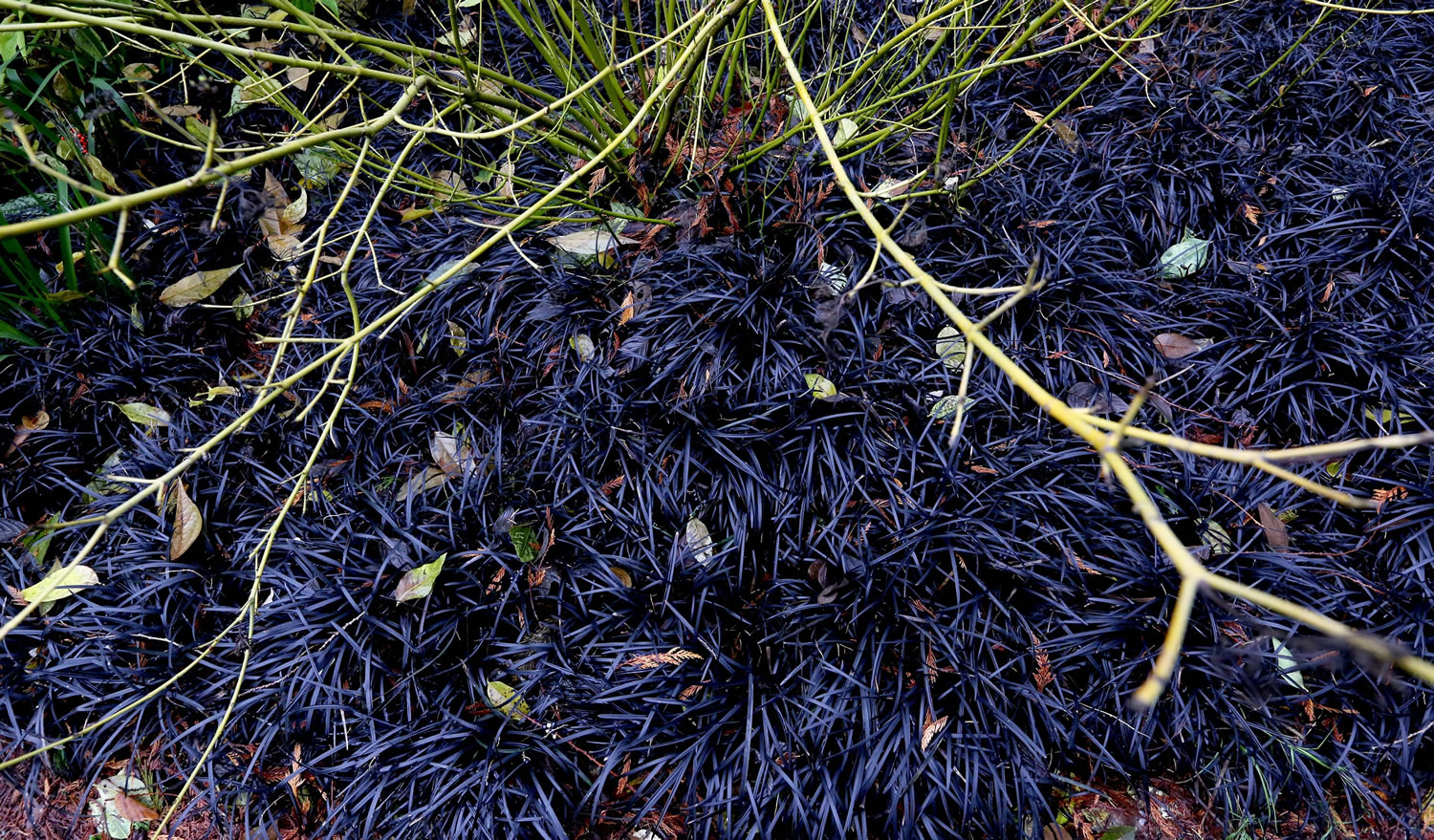SEATTLE — We notice most now the darkling days, the lengthening beams of sun, slanting low in the sky: Winter is coming. Yet as much of nature puts up the do-not-disturb sign until spring, now is when the winter garden is just awakening.
A path through the camellias at the Joseph A. Witt Winter Garden at the Washington Park Arboretum is strewn with immaculate white blossoms tinged with pink as camellia pitardii “Apple Blossom” opens fresh new buds to flowers aglow with golden stamens.
“Float those in a bowl, and you would hardly know it’s winter,” said Raymond Larson, curator of living collections for the University of Washington Botanic Gardens. The Winter Garden is one of his favorite spots in the arboretum, and on a recent day with an oyster sky, cold enough to enjoy a wool coat, Larson pointed to life burgeoning everywhere along its paths.
Hummingbirds zoomed by to visit the flowers of a towering mahonia (berberis) “Arthur Menzies,” its yellow blooms shining bright as a lit torch against the backdrop of somber cedars. And fragrance was everywhere: seeping from winter jasmine and sweet box, and clinging thick and rich to the Daphne bholua “Jaqueline Postil.” One 6-foot specimen was festooned with creamy white, star-shaped flowers just opened.
And the best is yet to come: The witch hazels were starting to fatten buds that are taking on color as they ready to bloom right through until spring. For in the Winter Garden, there is no such thing as the dead of winter.
The Pacific Northwest is a blessed realm for gardeners, a Goldilocks land neither too hot nor too cold for plants. So while gardeners elsewhere must make do with seed catalogs and photos this time of year, here plant people, that lucky tribe of all nations, can swoon through winter over the beauty of fragrant, blooming plants and fresh green foliage.
In the Winter Garden, birds follow the blooms, and benches beckon, offering comfortable seats from which to sketch, daydream, and enjoy the unfolding sweetness all around.
Created in 1949 and extensively renovated in 1988, the Winter Garden is especially welcoming because it was designed as an outdoor room. A walking path winds through spaces and aspects both grand and intimate. It’s the sort of place to get lost in the exquisite architecture of a single flower. Or, be swept away by a pageant of fragrance, texture and form emerging from the garden in sweeping views.
A deciduous holly, “red sprite” sparkled with red berries, and a silk tassel plant was just beginning its show of pendant catkins. They will lengthen to as much as 12 inches and fluff like feather boas in the weeks ahead.”Tempting to use in arrangements but don’t,” Larson said. “Pollen everywhere!”
Winter honeysuckle was starting to put out its tiny but power-packed flowers, with a scent exactly like Fruit Loops cereal.
For all the seduction of flowers and fragrance, some of the most interesting beds had no leaves or flowers on offer at all. Rather, the drama was all in the formline of the white-stemmed willow, and glow of yellow twig dogwood, dramatic above a bed of nearly black, evergreen mondo grass. Actually a lily, thelithesome leaves of Orphiopogon planiscapus “Ebony Knight” were the perfect foil to the stark geometry of winter twigs.
The big surprise was the Northern Chinese red birch. It’s a tree with peeling bark, like our native madrona. But it is a softer, more luminous version of that familiar tree, with a trunk that glows in a palette of salmon, peach and honey. Its bark shreds in tender, curling sheets marked with lenticels, or breathing pores.
Viburnum was unfurling tight white blooms, and a Manchurian snake bark maple, with its green and white striped bark, did not even look real, so vivid were its markings.
With hundreds of plants in a dozen or so beds arrayed around a broad green lawn, there were plants and trees and shrubs in all phases of emergence. Part of the fun was all the new plants to learn, set amid old favorites and native species.
“You can get ideas for how to incorporate plants in your garden that will brighten those darker winter months,” Larson said. “It’s nice to have a place to see the possibilities.”
It’s also a place to learn what that tree you planted today will look like in a few decades, Larson noted, gesturing to an Azara microphyla. Native to Chile, it hastiny leaves and even smaller yellow flowers perfumed like white chocolate. Diminutive close up, it had nonetheless grown to several stories tall.
Of course it took a while, but that’s part of what he likes about his work curating a garden, Larson said. “Plants teach patience.” And day to day, there is always something to watch for in the Winter Garden, all the more noticeable on the spare stage of winter.
“It’s a time of year when most people want to be indoors, but this will draw you out,” Larson said of the garden. “There is a lot going on.”



